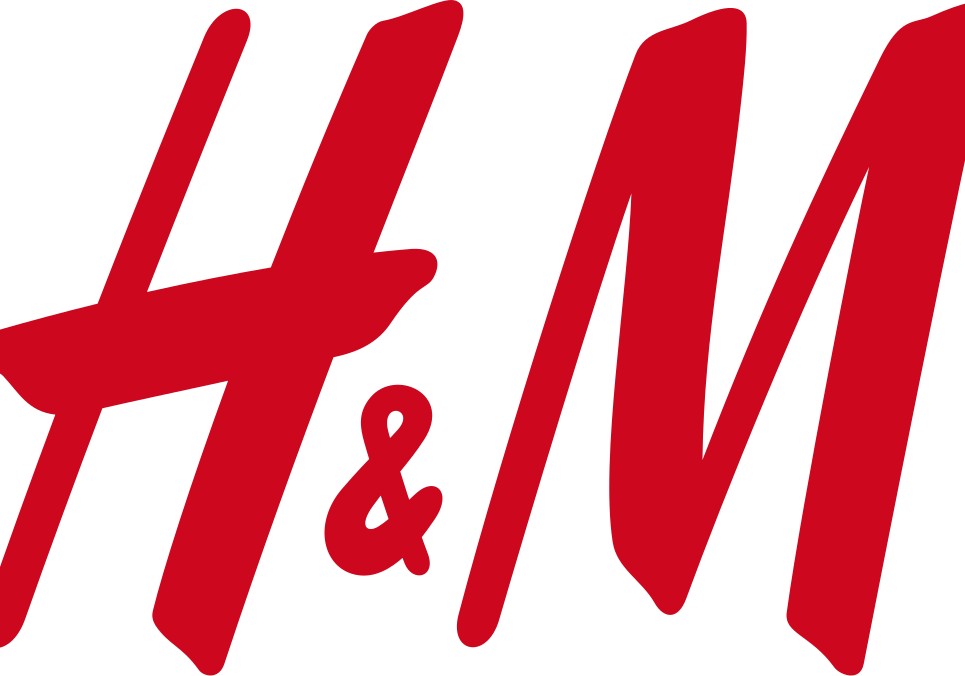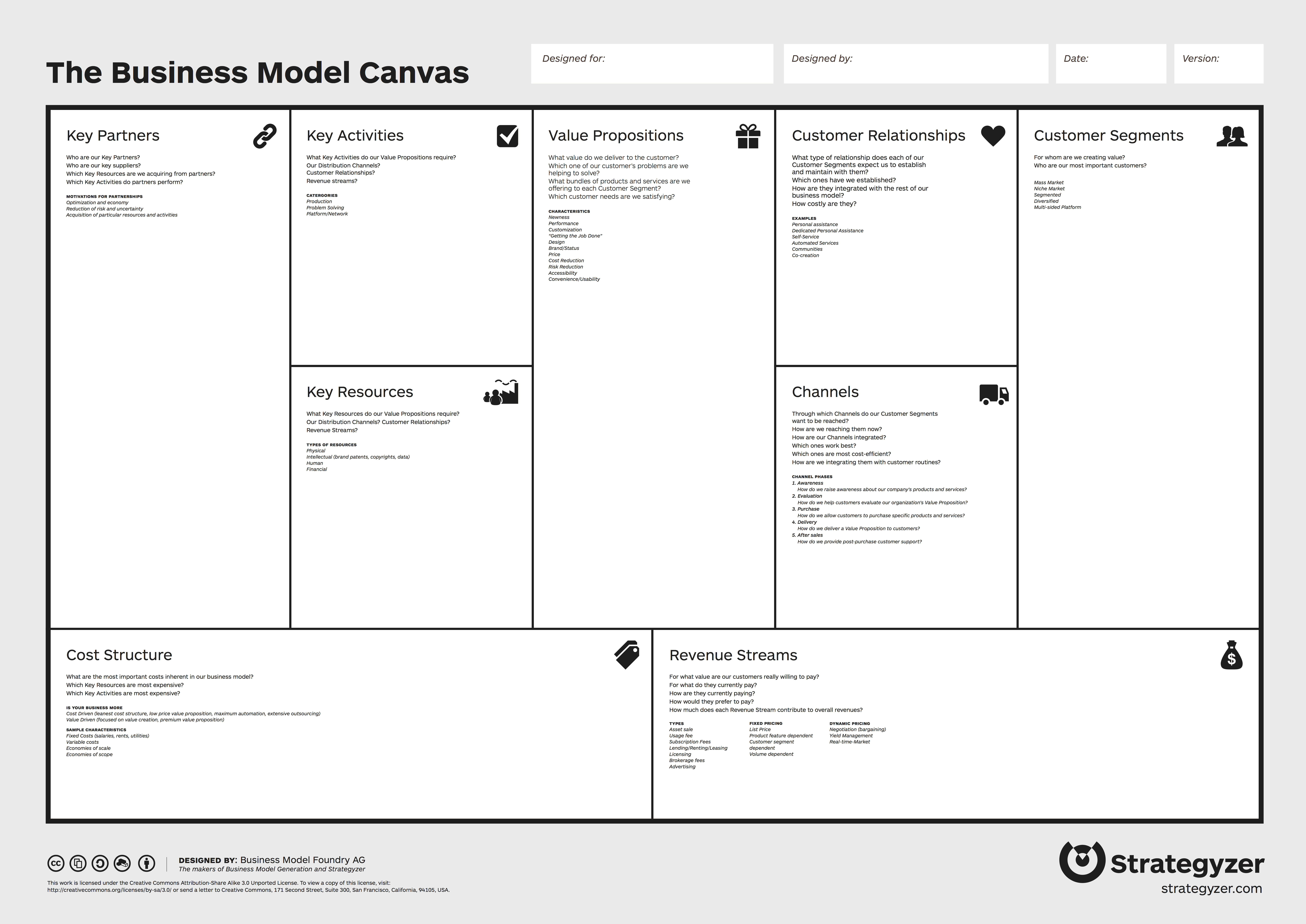Level Up Your Fashion Retail Strategy with Insights from the H&M Business Model Canvas

When it comes to the world of fashion, H&M is a name you can't ignore. The H&M business model is one of a kind, focusing on what's fresh and trendy without breaking the bank. Founded in 1947 in Västerås, Sweden, by Erling Persson, H&M has become a staple in the closets of fashion-conscious folks all around the globe.
However, their unique business model makes H&M stand out from the crowd and takes them from a single store in Sweden to the second-largest international clothing retailer. In this post, we're going to peel back the layers and dive into how H&M has built its fashion empire.
Before we dive into H&M's specific business model, let's first start with what a business model canvas is and why it's important...

A business model canvas is a strategic management tool that provides a visual representation of a company's key components. It helps you understand, analyze, and improve your operations. By breaking down a company's structure into nine key elements, it offers a comprehensive view of how the business creates, delivers, and captures value.
Now that we got that out of the way, let’s explore each component of the business model canvas and see how H&M applies it:

H&M's Customer Segments
Customer segments are the different groups of people or organizations you aim to reach and serve. Identifying these segments allows you to tailor your offerings and marketing strategies to meet the unique needs of each group, which can increase satisfaction and sales.
H&M’s approach to customer segments is diverse:
- Individual Consumers: These are everyday shoppers looking for stylish yet affordable clothing. This broad audience ensures a steady flow of revenue and a strong market presence.
- Fashion Enthusiasts: These customers seek exclusive collections and designer collaborations. This segment drives buzz and demand for limited-edition items, creating a sense of exclusivity.
- Eco-Conscious Consumers: Shoppers who prioritize sustainability. By addressing this segment, H&M aligns with modern values and attracts customers who support eco-friendly practices.
- Businesses and Retailers: Stores and businesses that resell H&M products, helping to expand their market reach and introduce their fashion to new customer bases.

H&M's Value Propositions
Value propositions are the products and services you offer that create value for specific customer segments. A strong value proposition differentiates you from competitors and gives customers a compelling reason to choose your products or services.
H&M delivers distinct value to its customers:
- For Individual Consumers: They provide trendy clothing at affordable prices, making fashion accessible to a wide audience.
- For Fashion Enthusiasts: H&M offers exclusive collaborations with famous designers and celebrities, creating a sense of luxury and excitement.
- For Eco-Conscious Consumers: Their commitment to sustainability, including recycling programs and eco-friendly materials, aligns with the values of customers who are concerned about the environment.
- For Businesses and Retailers: H&M supports global retailers and franchising opportunities, extending their reach and market penetration.

H&M's Channels
Channels describe how you communicate with and reach your customer segments to deliver your value proposition. Effective channels ensure that your products or services are easily accessible to customers, enhancing their overall experience.
H&M utilizes several channels to reach its audience:
- Official Website and Mobile App: These digital platforms offer convenience, allowing customers to shop anytime, anywhere.
- Retail Stores: Physical stores provide a tactile shopping experience and immediate access to products, enhancing customer satisfaction.
- Wholesalers and Retailers: Partnerships with other businesses extend H&M’s distribution network and market reach.
- Social Media and Marketing: Active engagement on platforms like Instagram and Facebook helps maintain customer engagement and brand visibility.

H&M's Customer Relationships
Customer relationships describe the types of relationships you establish with specific customer segments. Building strong relationships fosters loyalty, encourages repeat business, and can lead to positive word-of-mouth marketing.
H&M maintains strong customer relationships through:
- Customer Service Support: Reliable support helps address customer queries and issues, fostering trust and satisfaction.
- Social Media Engagement: Interaction on social media platforms builds a vibrant community and keeps customers engaged with the brand.
- Loyalty Programs: Rewarding repeat customers with perks and exclusive offers encourages ongoing business and strengthens loyalty.
- Feedback and Reviews: Actively seeking and responding to customer feedback helps improve products and services, aligning offerings with customer expectations.

H&M's Revenue Streams
Revenue streams represent the cash you generate from each customer segment. Understanding diverse revenue streams helps you maintain financial stability and identify opportunities for growth.
H&M’s revenue sources include:
Revenue streams represent the cash you generate from each customer segment. Understanding diverse revenue streams helps you maintain financial stability and identify opportunities for growth.
H&M’s revenue sources include:
- Retail Sales of Clothing and Accessories: The primary source of revenue from in-store and online sales.
- Franchising and Licensing: Expanding H&M’s footprint through franchise partnerships and licensing deals.
- Wholesale Distribution: Selling products to other retailers for resale.
- Collaborations and Limited Editions: Special collections with high-profile designers generate additional revenue and attract media attention.
- Subsidiary Brands: Revenue from brands like COS, Monki, and Weekday diversifies income sources and targets different market segments.
- Sustainability Initiatives: Exploring eco-friendly practices can open new revenue streams and enhance brand reputation.

H&M's Key Resources
Key resources are the most important assets required to make your business model work. Identifying these resources helps you understand what you need to operate effectively and deliver your value proposition.
H&M relies on several key resources:
- Physical Assets: Stores, warehouses, and logistics infrastructure support daily operations and product distribution.
- Brand and Reputation: A strong global brand attracts customers and builds trust.
- Design and Innovation Team: Creative professionals ensure H&M’s offerings remain trendy and competitive.
- Human Capital: Employees across all levels contribute to the company’s growth and operational efficiency.
- Supply Chain Network: An efficient supply chain ensures timely production and distribution of products.

H&M's Key Activities
Key activities are the most important actions you must take to successfully provide your value propositions to your customer segments. Focusing on these activities ensures that you allocate your resources effectively to deliver your value proposition and maintain your competitive advantage.
H&M’s key activities include:
- Fashion Design and Development: Creating new styles and collections keeps H&M at the forefront of the fashion industry.
- Marketing and Promotion: Strategies to build brand awareness and drive sales through various channels.
- Supply Chain Management: Efficient management of production and distribution processes to meet demand.
- Sustainability Initiatives: Implementing eco-friendly practices to reduce environmental impact and appeal to conscious consumers.

H&M's Key Partners
Key partners are the network of suppliers and partners that make your business model work. Strong partnerships can help you optimize operations, reduce risks, and acquire resources.
H&M collaborates with:
- Suppliers and Manufacturers: Ensuring quality production and efficiency in the supply chain.
- Designers and Celebrities: Collaborating on exclusive collections that drive interest and sales.
- Franchisees: Helping to expand H&M’s global presence by opening new stores and entering new markets.
- Environmental Organizations: Supporting H&M’s sustainability goals and enhancing corporate responsibility efforts.

H&M's Cost Structure
Cost structure describes all costs incurred to operate your business model. Understanding your cost structure helps you manage expenses, price products appropriately, and maintain profitability.
H&M's costs include:
- Production and Manufacturing Costs: Expenses related to creating and producing clothing and accessories.
- Marketing and Advertising: Investments in promoting the brand and attracting customers.
- Store Operations: Costs associated with running physical stores, including rent and utilities.
- Sustainability Efforts: Funding initiatives that support eco-friendly practices and align with consumer values.
- Research and Development: Investing in innovation to stay competitive and meet evolving market demands.
Ready to Level Up Your Fashion Retail Strategy?
H&M’s business model is a masterclass in balancing affordability, trendiness, and sustainability. Understanding their customer segments, value propositions, and key activities can provide valuable lessons for your own retail strategy. Whether you’re starting out or looking to refine your existing approach, the H&M business model offers insights into creating a brand that resonates with a wide audience while staying true to core values.
Which parts of H&M's business model are you thinking of applying to your business to level up your strategy? Book a business management consultation with us today, and let our expert consultants help you create a tailored business model canvas to drive your success!
Automate Today. Reap The Benefits Forever.
© 2024 ecomach | Privacy Policy | Terms of Service | Freelancers | Vendors






